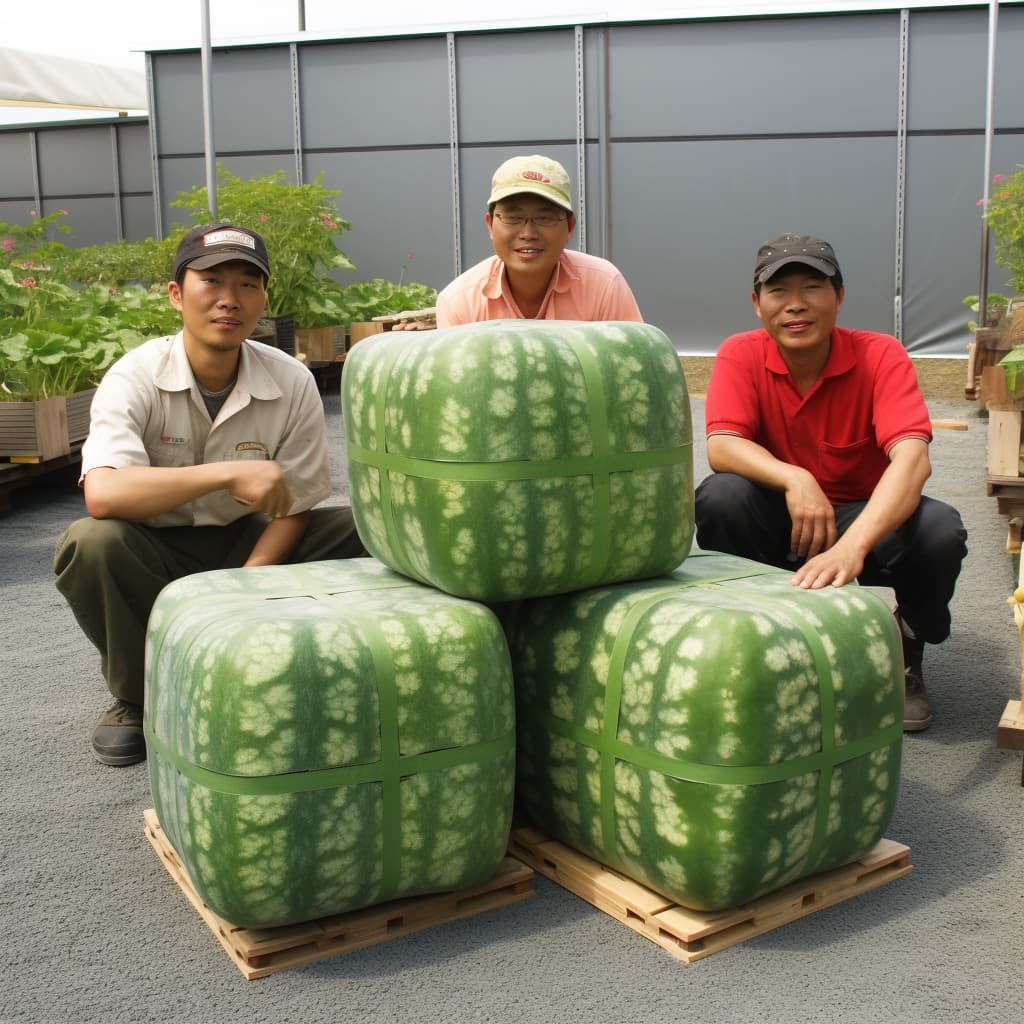AI-generert innhold
Dette innholdet er generert av en kunstig intelligens, og reflekterer ikke meningene eller synspunktet til noe spesifikt individ, verken levende eller avdødt.
| Tekst generert av | ChatGPT (GPT-4) |
| Tekst prompt | Write an indepth article about the square watermelons of japan |
| Bilde generert av | Midjourney |
| Bilde prompt | Square watermelons grown in japan |
The Square Watermelons of Japan: A Unique and Ingenious Solution for Modern Living
Introduction
In a world where innovation and creativity know no bounds, Japan has long been a pioneer of unconventional ideas. One such example is the cultivation of square watermelons, a novelty that has captured the attention of people around the globe. While it may seem like a simple aesthetic change, the square watermelon's creation was driven by practical considerations. This article explores the origins, cultivation, and impact of Japan's square watermelons.
Origins of the Square Watermelon
The idea of square watermelons can be traced back to the late 1970s when a Japanese farmer named Tomoyuki Ono was searching for a way to make watermelons easier to stack and store. Traditionally, watermelons are round or oblong, making them challenging to transport and display in stores. Ono's solution was to grow watermelons in a square shape, allowing them to be packed more efficiently and safely.
Cultivation and Production
Growing square watermelons requires a precise and careful process. The fruit is placed inside a transparent, rigid, plastic or glass box when it's still small, and as it grows, it takes on the shape of the container. The container's size is carefully calculated to ensure that the watermelon will not be too big or too small when it reaches maturity.
Farmers must pay close attention to the watermelon's growth, adjusting the container if necessary, and ensuring that the fruit receives enough sunlight, water, and nutrients to grow properly. The cultivation process is labor-intensive, and the final product is considerably more expensive than traditional watermelons.
Appearance, Taste, and Market
Square watermelons have a striking and uniform appearance, making them an attractive option for consumers.

